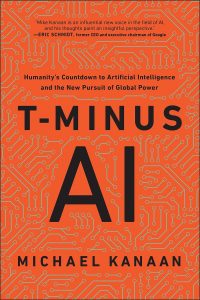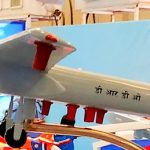
Author Michael Kanaan, in the prologue of the book, very aptly puts his intention so as to what he wants to convey through this book. He says “this book isn’t meant to be an exciting portrait of a utopian future, nor a dark and dystopian sketch of all we could fear. It is instead offered as an explanation of an incredible evolution in technology, and of a resulting capability that will forever change our information, opportunities, and interactions.” Through this book, the author goes back as far as the big bang and builds the idea on which the book is premised, which is to map the trajectory of the development of science and how certain instances in the annals of our history are instrumental in shaping the fate of human civilization. Therefore, the author, through his book, weaves a story about how certain inventions and discoveries led to another and uses captivating accounts of different people around the world, from different instances on the timeline to keep the readers engaged throughout the journey of the book. He touches upon the very basic as well as complicated scientific concepts to educate the readers about the vast horizons of science and technology.
In the first part of the book, the author very extensively describes the history of the development from the prehistoric era to everything that exists today. Starting from the Big Bang, he narrates how the universe formed, resulting in the formation of numerous galaxies, stars, planets, and so on, and finally narrows down to the emergence of the homo sapiens. Talking about the development of the notion of counting, he mentions how humans evolved from using stones and sticks to count to the advent of the roman numeral system and finally to the invention of the Arabic number system. He elaborately narrates various incidents from both the world wars, especially about the heroics of the English mathematician, Alan Turing at Bletchley (a town in the outskirts of London), who was the brain behind building the computer ‘Bombe’ that beat the extremely intricate German computer ‘Enigma’, which was used by the Germans to send confidential messages. It is assessed that “the information the Allies acquired through Turing’s Bombe, along with other work accomplished at Bletchley, shortened the war by at least two years and saved millions of lives.” He attributes the development of modern computing to the work of Turing, who is also considered to be the founder of modern computing and AI, and uses his rhetorical question “can machines think?” from his 1950 paper to set the tone to ask a few fundamental questions about the nature and abilities of AI. He presents questions to the readers about the comparison of consciousness and intelligence and debates whether Intelligent can ever be conscious and uses the arguments by Prof. Michio Kaku from City University, New York to substantiate his ideas.
In the next section of the book “Twenty-first Century Computing and AI”, the author introduces the basic concepts pertaining to AI development from the fundamentals of data to the applications of robotic technologies. He talks about the evolution of games and how deep learning, machine learning, and neural networks are being used to develop and fine-tune AI algorithms. In particular, he writes about how, at different instances, various situations when AI programs beat humans at chess and it boiled down to a showdown between humans and computers. He then talks about the fundamentals of data and how sharing, storing and analyzing data evolved through the passage of time. The advent of the Internet has resulted in the generation of a considerable amount of data, thus increasing the need for AI to intervene and categorize that data. Introducing the concepts of neural networks, the author talks about the various forms of neural networks and how it is shaping the world that we live in today. He provides an explicit list of how AI is being accommodated in various other fields, where it was conventionally thought that machines won’t be able to replace humans. However, since AI feeds on data that is generated by humans, it is subject to biases that are underlying in the data. The author attributes the bias in the data to various factors which are historic or cultural and provides examples to support this fact. He then closes this section of the book with his analysis of the evolution of robotics and how it influences human life in its numerous shapes and forms, also giving his insights on how pop culture has shaped the ideas of people while perceiving robots.
In the final segment of the book “The Sovereign State of AI”, the author describes that AI affects and shapes the geopolitical equilibrium. After the second world war, the US and the erstwhile Soviet Union indulge in a cutthroat competition to gain superiority in the realms of technology. Specifically talking about the race for aerospace dominance, he communicates how the successes and the failures amalgamated the nations and acted as a stimulus for both the world powers to develop their technological arsenal. Through the years as the capabilities of the US increased with the setting up of institutions like NASA and the DARPA, it sped past Russia at the dawn of the century to become the sole technological power, filing considerable amount of patents and inventing groundbreaking technologies like the DARPANet, which was later known as the Internet. The author also mentions the rapid rise of China during the first two decades of the twenty-first century, establishing itself as a rising AI superpower. China has, over the decades, used AI systems to ensure social discipline among its masses but tracking their activities and categorizing them as good or bad based on certain benchmarks. The author puts forth numerous interesting examples of how technologies like facial recognition, surveillance cameras, etc have been implemented in society to cultivate good citizenship. He also mentions how China is exporting its technologies and analogously compares this to the imperial expansionist policies in the past. With an intention to educate the readers about the progress of AI developments in various other countries, the author finally presents the agendas and goals of countries like the USA, Canada, Australia, France, the UK, and the European Union to equip themselves with AI-based technologies to ensure better governance.
I would urge everyone to read this book, including those who have no prior knowledge about the rather intimidating concepts of Artificial Intelligence, Machine Learning, Neural Networks, and so on. This book is unique because it can pique the attention of both a novice and an expert of the field of technologies and can keep them engrossed throughout the course of the book. Humans have come a long way and have reinvented themselves by finding solutions to the problems they face and innovate from whatever resources they have. From the development of language and counting, the invention of the wheel, the printing press, steam engine to the development of the internet, according to the author, humans today stand at a very important juncture in the story of mankind. As the author writes that “we’re now at an inflexion point in the history of the human race. What we do with respect to AI will impact our present, our future, and perhaps our eventual destiny,” this book is a very good avenue to start learning about how the future of human civilization could shape.













